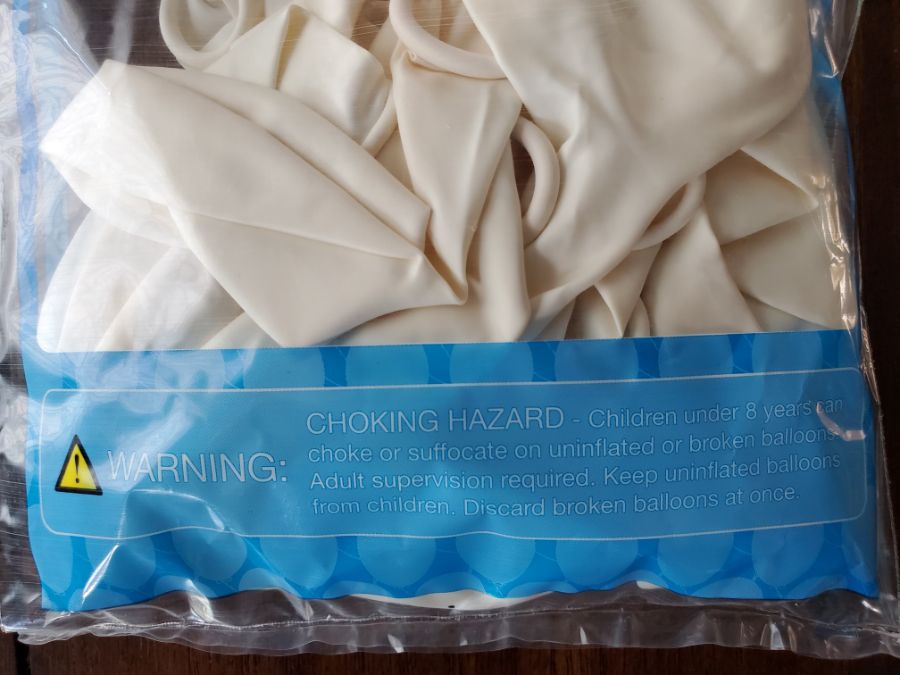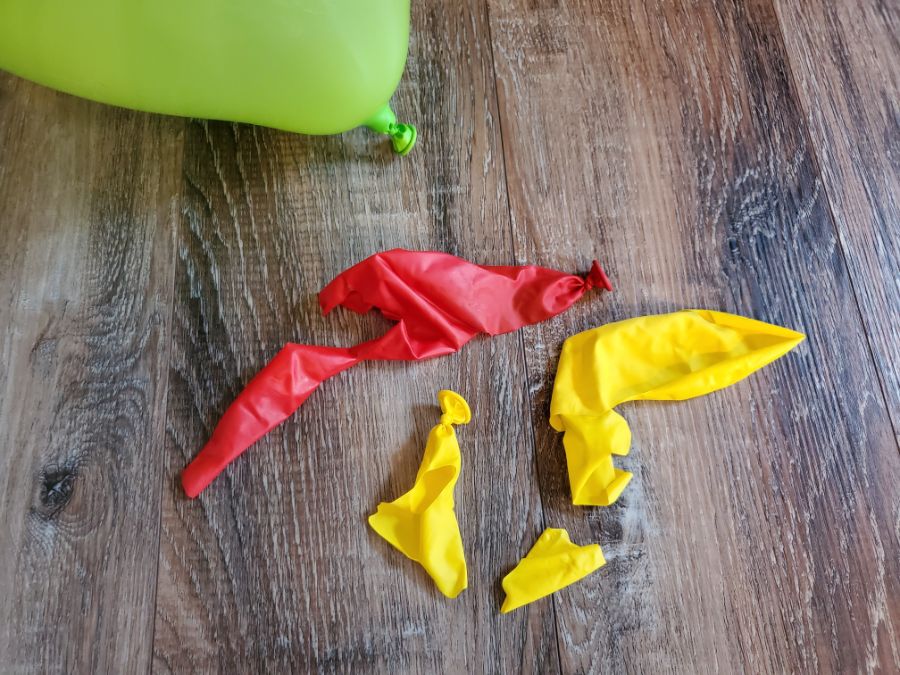Balloons are a staple for any party. Birthdays, anniversary parties, family reunions, even weddings! They are one of the easiest ways to decorate and add a bit of pizazz to your event.
Balloons are super versatile and come in many different shapes, sizes, and colors. But are they dangerous? Are balloons flammable?
In short, balloons do not pose a high flammability risk. They are not easily combustible when exposed to oxygen or other gases, they do not require special storing, and they are not labeled as a high flammability risk.
Let’s explore what exactly it means to be flammable, how balloons are made, and how to reduce the risks associated with balloons and fire.
What is Flammability?
The basic definition of flammability is something that can easily catch on fire. When something is exposed to heat or an open flame, how fast is it going to catch on fire?
How long will it burn? How fast will the fire spread? These are all things considered when questioning the flammability of something.
How easily something can catch fire when exposed to heat or flames is tested through fire testing. This then helps classify how flammable something is.
Examples of highly flammable items include: rubbing alcohol, nail polish, spray paint, gasoline, and hand sanitizer. All of these items catch fire quickly and can spread fire rapidly.
Balloons will not do this, therefore they are not considered “flammable.”
Safety Standards for Balloons
Balloons are classified as toys. This is relevant, because this classification determines the standards for how balloons are made in order to be sold to the public.
This also determines what safety labels must be placed on the packaging. The only safety labels required for balloon packaging are choking hazard and age requirements.
They require no flammability risk warnings. See more information on balloon safety standards.

Furthermore, balloons must conform to the safety regulations set by the ASTM F963. ASTM International develops standards for products and services, and F963 relates specifically to the production of toys.
Toys are required to meet flammability standards and should not be flammable or made with flammable materials.
What Are Balloons Made Of?
There are two common types of balloons that most people are familiar with: Latex and Mylar foil.
Latex Balloons
Latex balloons are a popular choice. Their stretchy material allows them to be filled with many different kinds of substances. T
hey can also be manipulated into different shapes and forms. They are not only great for party decorations, but for fun activities, as well.
Latex balloons are made of latex rubber. While some latex can be synthetically made, latex is actually a natural substance that is extracted from rubber trees and made from their sap.

Rubber latex is not fire-resistant. It can catch on fire. However, rubber latex does not start to burn until between 250 and 300 degrees Fahrenheit.
Mylar/Foil Balloons
Mylar or Foil balloons are made with a nylon material that is given a metallic or aluminum outside coating for shininess.
Unlike latex, it is a non-stretchy material and must be filled all the way to give it its nice, balloon appearance.
Because of their non-stretchy nature, these types of balloons do not require pressure to keep it filled up and in its balloon form, which allows foil balloons to last for weeks, whereas latex balloons lose pressure and deflate much quicker.
While Mylar or foil balloons do have a metallic element to it, it is not fire-resistant. Mylar’s melting point is 489 degrees Fahrenheit.

Overall, yes balloons can catch on fire with the right temperatures, but they are not considered a flammable risk.
Do the Contents of a Balloon Increase the Flammability Risk?
Now that we’ve looked at what materials balloons are made of and determined the level of flammability risk, it’s time to look at what is inside of a balloon.
What can balloons be filled with? And, could this make balloons more flammable?
There are 4 popular substances people fill their balloons with:
- Helium
- Air
- Water
- Paint
Helium – Is it Flammable?
Helium is a gas that people commonly fill their balloons with. Filling balloons with helium causes them to float, because helium is lighter than air.
This makes them a more decorative and fun addition to any party. But, is it safe?
Helium is an inert and non-toxic gas. This means that it is a non-combustible and stable gas. Therefore, filling your balloons with helium does not make them more flammable or dangerous.
Air
If you don’t need your balloons to float, you can simply blow them up with air. This can be done using a balloon pump or just by using your lungs.
The common belief is that we breathe in oxygen and breathe out carbon dioxide. But, the air we breathe out is actually a mixture of nitrogen, oxygen, and carbon dioxide gases.
So, does the air we blow into a balloon somehow make it more flammable? No. All three of those gases in the concentrations that we breathe are not flammable.
Therefore, this does not cause balloons to have increased flammability.
Paint
Another fun option for filling your balloons is to fill them with paint! While this may sound a bit messy, it certainly is a fun way to use balloons! Could filling a balloon with paint make it more flammable?

This depends on the paint you use to fill them with. Some paints are flammable, such as oil-based paints or aerosol paints. Latex paints are water based and are not flammable.
So, as long as you’re using a safe paint, the risk of flammability does not increase.
Water
I think it is safe to say that water balloons are not something we need to worry about when it comes to the question of increased flammability.
Even if a balloon were to catch on fire, the water will extinguish the fire as soon as it burns through.
The greater risk here might be a water balloon hitting a flame source, which could potentially spread a flame. So no matter what, fire safety is key.
Potential Fire Risks
While the actual balloon itself may not be considered highly flammable, it can catch fire. So, how could a balloon be exposed to fire?
Probable sources include: candles, open wood fires (such as bonfires or fireplaces), and lighters.
- Candles – A candle flame burns at over 2,000 degrees Fahrenheit.
- Wood Fire- A wood fire burns at over 1,000 degrees Fahrenheit.
- Butane Lighter – A butane lighter can burn at over 2,500 degrees Fahrenheit.
To recap, latex balloons burn at 250-300 degrees Fahrenheit, and foil balloons burn at nearly 500 degrees Fahrenheit.

Each source has a flame that burns hot enough to cause a balloon to burn, whether it’s latex or foil.
So while they may not pose a high flammability risk themselves, we know that balloons will burn when exposed to these common flame sources.
We know the material can burn, but what happens exactly when it is exposed to flame?
What Happens When Balloons Do Catch on Fire?
Luckily, when balloons do catch on fire, they tend not to stay on fire for long. If the tail end of a balloon (where it is tied or sealed) is set on fire, the latex will burn.
When the flame reaches the base of the balloon, it will either cause the balloon to break and release the air or gas slowly, or it will cause it to pop.
If the large, blown up portion of the balloon is exposed to flame, it will pop almost immediately. Either way, the fire is extinguished and your balloon is in pieces.

A foil balloon, when exposed to flame, simply melts. In fact, foil balloons are more likely to be disastrous in other ways.
Because of their foil coating, they do conduct electricity. If exposed to power lines, this could spark a fire or cause power outages.
So, despite all we have discovered, the material of balloons is developed to be rather safe. Whether balloons are flammable is not the key danger. Balloons are more likely to cause a domino effect, rather than melt into a disaster themselves.
Let’s explore some safe solutions to keep your party safe when flames and balloons could potentially mix.
How to Keep Your Party Safe with Balloons
- Use foil balloons in centerpieces, because they last longer than latex and will not deflate and fall into a flame.
- Weigh down your helium balloons to keep them in one place.
- Do not burn candles if having a party at home. Instead, use incense, scent packets placed throughout your house, or wax outlet burners.
- Do not have very long strings hanging from the base of the balloons.
- Keep the balloons away from the cake when the candles are lit.
- Do not hit or throw balloons around an open flame.
- Do not release balloons, foil or latex, into the sky.
Final Thoughts
Balloons can certainly catch on fire. Let’s face it, not many materials are 100% fire resistant. Almost anything can catch on fire when exposed to an open flame long enough.
While they are not fire-resistant, they are certainly not highly flammable.
You always want to be careful around an open flame, no matter the circumstances. But, balloons do not have more of a risk of catching on fire than anything else.
As long as you’re safe and diligent about the potential hazards, go ahead and enjoy your party the way you envision it! Candles, balloons, and all!




